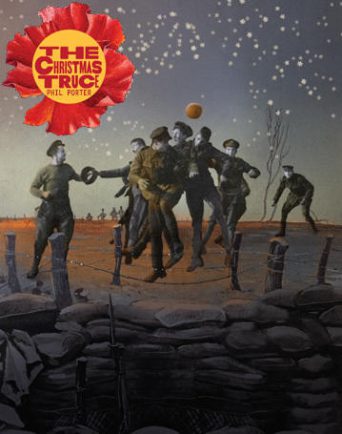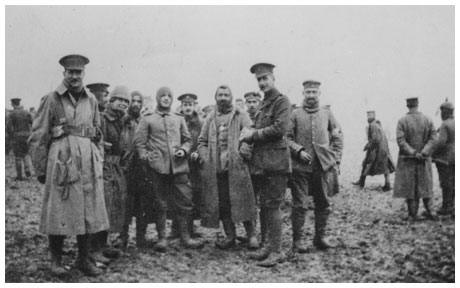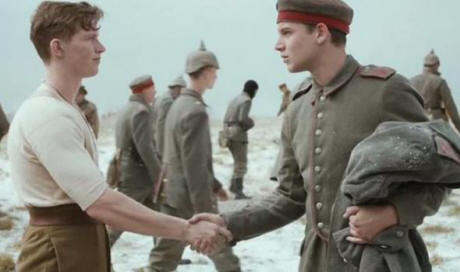THE HISTORIC Christmas truce during the First World War conjurers images for many of rival soldiers playing football in no man’s land.
The story has been perpetuated down the years by everyone from Paul McCartney in the video for his song Pipes of Peace, to Sainsbury’s new Christmas television ad.
The RSC’s new play The Christmas Truce, opening in Stratford on Saturday (November 29), also features troops playing football on the poster.
But a Leamington historian argues there is very little actual evidence to support an impromptu match between allied and German troops.
Mr Baker has made a special study of the events of December 1914 in his newly published book The Truce: The Day the War Stopped.
He told The Observer: “There’s a lot of piffle talked about football. The body of evidence for a kickabout between enemies is very thin, and only in one or two sectors are there reports that can be relied upon.
“The truce period is a source of persistent symbolism that obscures the truth of what happened and why. A mid-2014 visitor to Prowse Point Cemetery near Ploegsteert in France wrote that they were ‘remembering the Football Truce’ by being there.
“A simple wooden cross, planted in 1999 almost as a private marker that a group known as the Khaki Chums had spent some time in a trench they had dug on one of the spots where the truce took place, is now always festooned with scarves, rosettes, shirts and other football memorabilia.
“The psychology of visitors leaving such things would make a good study in itself. The football organisation UEFA is this year marking the centenary with high-profile football events in Flanders.
“There is nowadays rarely a mention of the truce without football being at the forefront, if not to the exclusion of all else. It masks a more difficult and complex truth.”
Mr Baker said the football aspect had obscured the truce’s real impact on the two sides.
He explained: “Men on both sides had shown a tendency to be curious about the other side and were exchanging messages by December 11, but after a period of extreme violence as the British and French unleashed several attacks in mid-December, all of that was brought to a halt.
“In many areas where the Christmas truce took place, it was as much to bury the dead lying in no man’s land as it was to take advantage of the spirit of the season.
“The positive aspects of the human spirit occasionally shine though the gloom of one the blackest periods of our history.
The story that ordinary soldiers stopped the war, met their enemy in no man’s land, exchanged conversation and mementos, shook hands and even kicked a football about together, is at once heart-warming and rather odd.”
The Truce: The Day the War Stopped, published by Amberley, priced £18.99, is available from local bookshops and Amazon.
The Christmas Truce can be seen at the RSC until January 31. Visit www.rsc.org.uk for tickets and further details.
The Christmas truce – British, French and German soldiers gathered in no man’s land in a rare moment of peace in December 1914. (s)
A scene from Sainbury’s ad as British and German soldiers part ways after their football match. (s)















